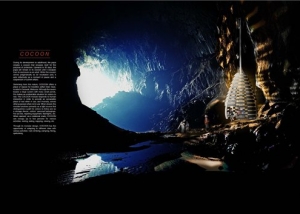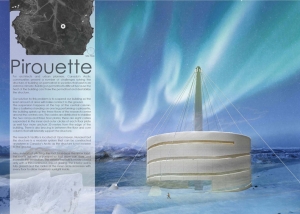2015- 2016
Finalists
Project Title | Student(s) | University | Faculty Sponsor(s) | Award |
| Bird’s Eye | Matthew Dlugosz & Zihao Wei | University of Waterloo | Terri Meyer Boake & Dan McTavish | Award of Excellence |
| COCOON | Erik Aquino; | Ryerson University | Vincent Hui | Award of Merit |
| Pirouette | Jinsu Park, Sugandh Gupta & Catherine Tan | University of Waterloo | Terri Meyer Boake | Award of Merit |
| Caudal Fin Pier | Christina Vogiatzis & Yunjia Ni | University of Waterloo | Terri Meyer Boake | Finalist |
| Enduring Suspense | Tommy Tencer & Paul Kim | University of Waterloo | Terri Meyer Boake & Dan McTavish | Finalist |
| Suspended in Mies | Bennett Oh | University of Waterloo | Terri Meyer Boake | Finalist |
Electronic Judging
Judgify is a cloud-based awards judging system that allows awards, contests and competitions to be organized online, anytime, anywhere.
Thank you to the Judges:
Tim Verhey – Walters Inc.
Carol Kleinfledt – Kleinfeldt Mychajlowycz Architects
Terry Wilk – Stantec
Loraine Fowlow – University of Calgary
The Challenge
The Inca civilization is often credited with constructing the first known examples of long-span suspension architecture. Realized in the form of bridges that spanned across rivers and gorges, stitching together an extensive road system that traversed most of the western length of South America. Constructed by weaving together natural fibres into rope, this ingenious form might well be what first comes to mind by the term “suspend.” Yet the very notion of suspend has been woven into our everyday environment since we first learned to mimic nature in the creation of basic shelter. Interestingly enough, the spider web is now being studied for its capacity to capture mist from the air, as a way to harvest clean water in locales where other sources are all but non-existent.
With the introduction of steel as a structural material, the exploration of what it means to suspend is limited only by the imagination of the architect to exploit material properties to their maximum potential. Forms that visually challenge us to suspend our disbelief, harness the tensile properties of steel in ways that infuse a sense of wonderment and even suspense, into our built environment.
Students are challenged to design a structure that explores ‘suspend’ on a site of the designers’ choosing. While the purpose and scale are left to the discretion of the designer, it is important to focus on what it means for us to engage and experience suspend. The structure must be primarily steel, but otherwise, the material palette is open.
Competition Statement
The intention of this design competition is primarily to provide students of architecture in Canada with a unique opportunity: to enter into a design process that brings together, of necessity, concept and reality. It is important for students of architecture to grasp the fact that structural design lies not just in the realm of the engineer, but can be a means for architects of arriving at a meaningful realization of architectural ideas. It is when theory meets physical necessity that architecture can become really interesting.
To that end, this competition calls upon students to conceptualize, and realize in detail, a structure of simple program that explores the meaning of suspend. The exploration will, of course, include issues related to program and site, but the emphasis in this competition is upon the architectural exploration through form and material, on the essential relationship between architecture and structure.
The reality of this competition comes in two forms: through the requirement for buildable details, primarily utilizing structural steel; and through the collaboration with the steel fabrication industry on those details. This collaboration is an important component of this competition, as a secondary objective is to expose students to both the opportunities and restraints inherent in realizing conceptual design.
The conceptual component of this competition will come through the recommendation that this competition be run through either a studio, or a lecture based course, most probably within a structures course. Under the guidance of faculty sponsors, students will conduct the design process as an academic exercise, within the guidelines set out in this brief. As an academic project, the design process will adhere to the standards set forth by the students’ school of architecture.




